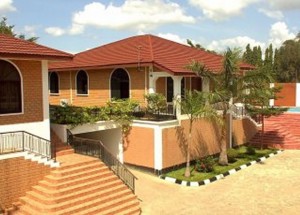Ghana’s building regulations to contain accessibility designs
 The National Council on Persons with Disability (NCPD) together with interested parties, have produced national standard accessibility designs to guide builders and service providers to remove barriers impeding universal accessibility of vulnerable people in the society.
The National Council on Persons with Disability (NCPD) together with interested parties, have produced national standard accessibility designs to guide builders and service providers to remove barriers impeding universal accessibility of vulnerable people in the society.
The Ghana Standard Accessibility Designs (GSAD) is expected to serve as a useful tool for individuals and corporate bodies involved in designing, implementing and supervising projects where accessibility forms core component.
“Our friends in the media, currently, the GSAD is being fine-tuned for gazetting by Ghana Standards Authority,” Mr Kwamena Dadzie-Denis, NCPD Executive Secretary told reporters in Accra.
“It will then be incorporated into Ghana’s building regulations, then approving authorities will make accessibility designs as one of the criteria for acceptance of plans for construction and the built environment,” he said.
The objectives of the national accessibility designs are to provide an accessible built environment to users and as a tool for measurement or auditing of universal accessibility.
It is estimated to guide estate developers, designers and similar persons involved in built-environment to incorporate accessibility principles in their various stages of planning, designs and execution as well as increase awareness on accessibility criteria and the need for barrier free designs.
Mr Dadzie-Denis named special beneficiaries of the standard designs as wheelchair users and people with limited walking or ability to move, visual impairment or low vision as well as hearing impairment.
Elderly persons, pregnant women, people with temporary disabilities, children and people carrying heavy or cumbersome luggage would also benefit from the designs when finally regulated.
The GSAD contains information on the design and construction of Pedestrian Access, Zebra Crossing or Crosswalks, Kerb Ramps or Grades, and Elevation Changes, Guards and Hand-Rails.
It also has Bus Shouters, Ramps, Tactive Marking, Stairs and Steps, Drainage Gratings, Trunset Shelters, ATMS and Bank Machines.
Washrooms, Floors or Grounds, Schools, Transport Terminals, Airport, Lighten, Public Address Systems, Tactile Signs and Symbols, Hospitals and Health Care Facilities among several others are included.
According the NCPD minimum standards for access of information and services are also being developed while sign language training for public official are being done with 15 persons trained this year.
Relevant institutions, metropolitan, municipal and district assemblies and allied agencies would have access to the document while efforts are made to educate the public on its content, Mr Dadzie-Denis said.
The Standard is projected to address numerous concerns of persons with disability, particularly, their failure to access public buildings for services and participate in social activities due to due built barriers.
Section 6 of Ghana’s Disability Act 715, 2006 and Article 9 of the United Nations Convention on the Right of Persons with Disability require that buildings, roads, indoor and outdoor facilities including school buildings, medical facilities and work places are made accessible to Persons with Disability.
The NCPD with funding from Open Society Initiative of West Africa collaborated with the Ghana Federation of Disability Organisations, Ghana Blind Union, Ghana Society for the Physically Disabled, Ghana National Association for the Deaf, ministries, departments and agencies and the GSA to put together the draft document.
Source: GNA
